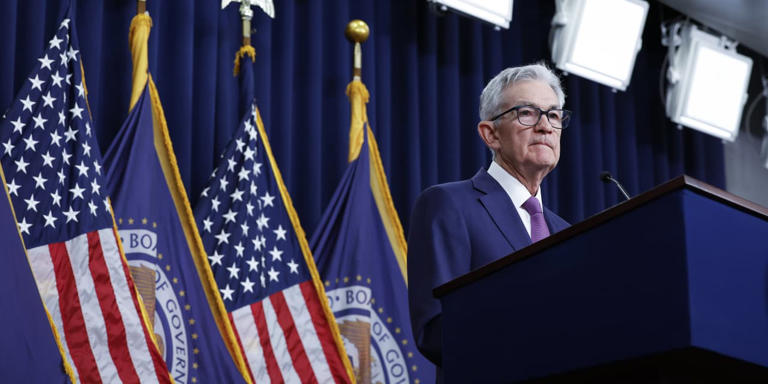The simultaneous occurrence of two major economic events on Wednesday, namely the release of the May consumer-price index (CPI) in the morning and the Federal Reserve’s policy announcement in the afternoon, has captured the attention of Wall Street. This convergence is a relatively rare phenomenon, having happened only 13 times since 2008, as reported by Dow Jones Market Data. While both events individually have the potential to influence market dynamics, their simultaneous timing adds an extra layer of significance and anticipation for investors and analysts alike.
Historically, on days when the CPI report and the Fed’s policy meeting align, all three major stock indexes—the S&P 500, Dow Jones Industrial Average, and Nasdaq Composite—have tended to experience gains. According to data from Dow Jones Market Data, the S&P 500 has risen by an average of 0.7%, the Dow has added 0.9%, and the Nasdaq has advanced over 1% on such days. Despite the limited sample size, this trend underscores the market’s positive response to these dual events in the past.
However, some market strategists remain cautious about expecting heightened volatility in response to this rare occurrence. Dave Sekera, chief U.S. market strategist at Morningstar Research Services, suggests that significant market turbulence on Wednesday would likely result from unexpected remarks made by Fed Chair Jerome Powell during the press conference following the policy statement release. Nevertheless, Sekera believes such an outcome is improbable, given Powell’s typically measured approach to communication.
The anticipated CPI data for May is expected to provide further insights into inflation trends. Economists polled by the Wall Street Journal forecast a modest increase of 0.1%, marking the smallest uptick in seven months. Core inflation, which excludes volatile food and energy prices and is closely monitored by economists and the Fed, is projected to rise by 0.3% for the second consecutive month. While meeting or exceeding these expectations may bolster market sentiment, the high valuations in the market may limit any short-term upside potential for U.S. equities.
Conversely, a significant deviation from consensus inflation expectations could trigger a minor selloff in the stock market. The extent of this reaction would depend on the magnitude of the deviation from expectations. Recent history has shown that unexpected inflation metrics have prompted notable market movements, particularly in 2022 when hot inflation numbers marked the onset of the Fed’s rate-hike cycle.
Similarly, market performance on Fed policy decision days this year has been mixed, with varying movements observed across the S&P 500, Dow, and Nasdaq. Despite these uncertainties, U.S. stocks traded with mixed results on Tuesday, with the Dow experiencing a decline of over 250 points, the S&P 500 registering a slight dip, and the Nasdaq showing modest gains driven by a surge in shares of Apple Inc.
Overall, the convergence of the CPI release and the Fed’s policy decision on Wednesday is poised to inject some level of volatility into financial markets. Investors and analysts will be closely monitoring both events for potential implications on monetary policy, inflation outlook, and broader market sentiment.
